This article shines a light on some essential generalization procedures in Applied Behavior Analysis (ABA) that can really help kids, especially those with autism, transfer their skills effectively. It highlights how personalized strategies, diverse teaching methods, and ongoing assessments work together to boost the chances of these skills being used in everyday situations. This approach not only promotes independence but also enhances social interactions, making a real difference in their lives. Let’s explore this together!
In the world of Applied Behavior Analysis (ABA), transferring learned skills from therapy to everyday life is so important for helping individuals with autism gain independence. Let’s dive into seven essential generalization procedures that not only boost skill transfer but also empower both caregivers and therapists.
How can we effectively implement specific strategies to ensure that skills are retained and applied in various contexts? By exploring this question, you’ll discover valuable insights into the transformative power of personalized approaches in ABA therapy. Together, we can pave the way for improved outcomes and greater autonomy for our children. We’re here to help you every step of the way!
At Rori Care, we understand that every child is unique, which is why we use personalized strategies tailored to each individual's needs. Our thorough assessments, often involving family participation, help clinicians identify the best techniques for skill transfer. For instance, we use role-playing and visual aids to help children practice their skills in real-world situations. This way, therapy extends beyond the clinic and into everyday life.
Our behavior care engine is always on the move, adjusting intervention and skill acquisition plans based on the latest progress reports. This shows our commitment to adaptive treatment plans that grow with your child. By focusing on data-driven approaches, we not only promote independence but also empower families through caregiver education. This reinforces skills in daily contexts, enhancing the effectiveness of therapy.
We believe in setting clear, measurable objectives and using evidence-based strategies. This ensures that every individual receives the highest standard of care, tailored to their personal journey. Let’s explore this together! Your child’s success is our priority, and we’re here to support you every step of the way!

At Rori Care, we understand the challenges that parents face when it comes to supporting their children with autism. Our ABA Therapy incorporates a variety of comprehensive generalization procedures ABA aimed at promoting effective learning. One of the key approaches we use is Natural Environment Training (NET). This method focuses on teaching skills in your child's everyday surroundings, like at home, in playgrounds, and out in the community. By doing this, we not only make the skills more relevant but also encourage their use in real-life situations.
We also believe in the power of variety! Using different examples and scenarios helps ensure that skills aren't just learned in one specific context. By exposing your child to a range of situations, our therapists can help them become more adaptable and flexible in how they apply their skills. This means they can generalize their abilities across various environments and interactions, making daily life a bit easier and more enjoyable.
We know that incorporating diverse teaching methods and environments is crucial. Regular assessments and collaboration with parents and educators further enhance the effectiveness of the generalization procedures ABA. This comprehensive approach ensures that your child can successfully transfer their skills beyond therapy sessions, paving the way for greater independence and improved social interactions. Plus, we empower caregivers by sharing ABA principles and strategies through education. This way, you can provide even more support at home, make informed decisions, and actively participate in your child's development. Together, we can work towards achieving better behavioral outcomes!
Let’s explore this journey together! We’re here to help you every step of the way!
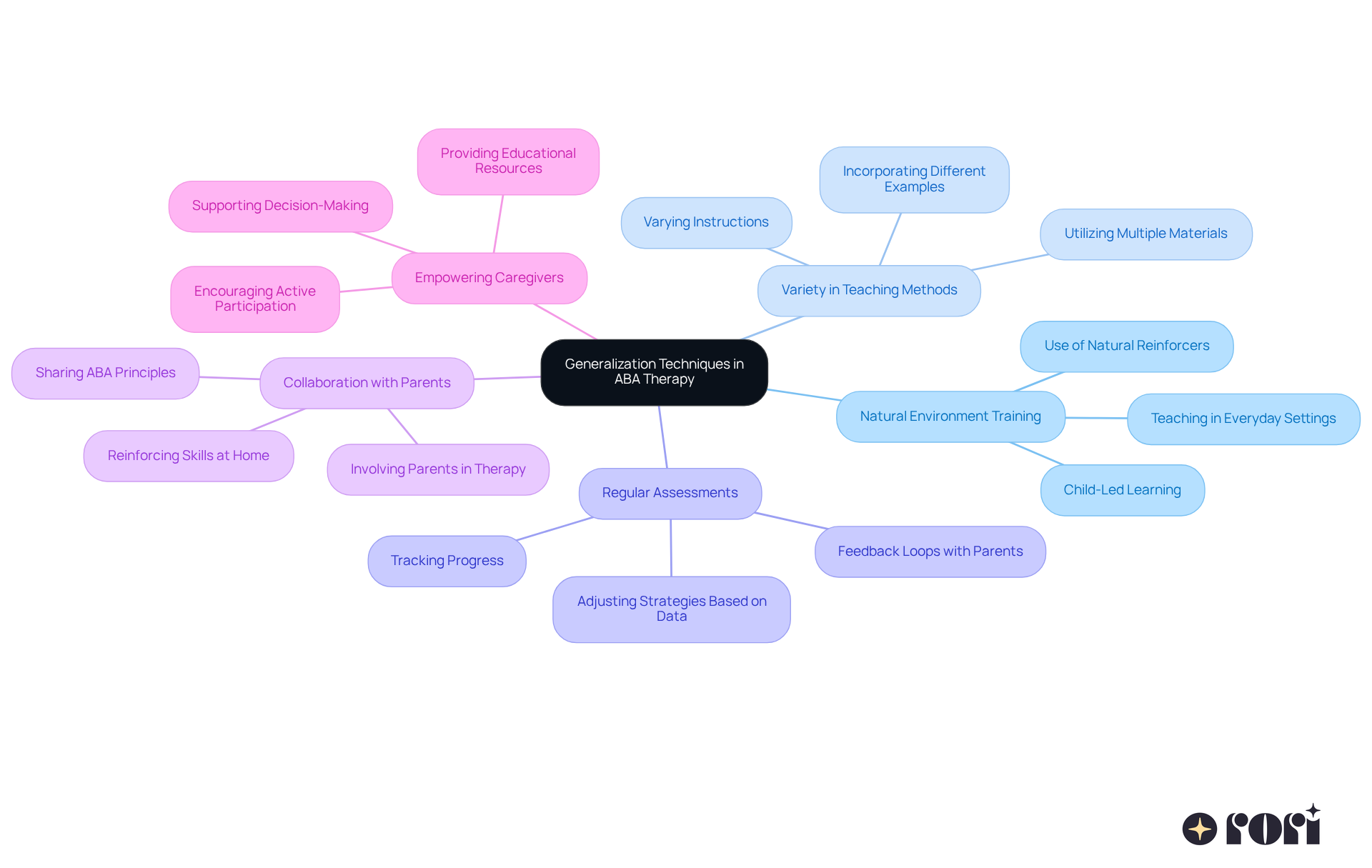
At Golden Steps ABA, we really focus on strategies that help enhance independence through generalization. Think about it: when young individuals learn self-regulation and decision-making in familiar settings, they start to feel more confident. By practicing these skills in real-life situations, they can apply what they've mastered in treatment to their daily lives, fostering a wonderful sense of autonomy.
But it's not just about the kids! This approach also empowers caregivers, equipping them with the knowledge and strategies they need to support their child's development effectively. When caregivers are involved, it leads to better behavioral outcomes because they can make informed decisions and provide consistent support at home. Ultimately, this nurtures independence within the family, creating a supportive environment for everyone. Let’s explore this together!
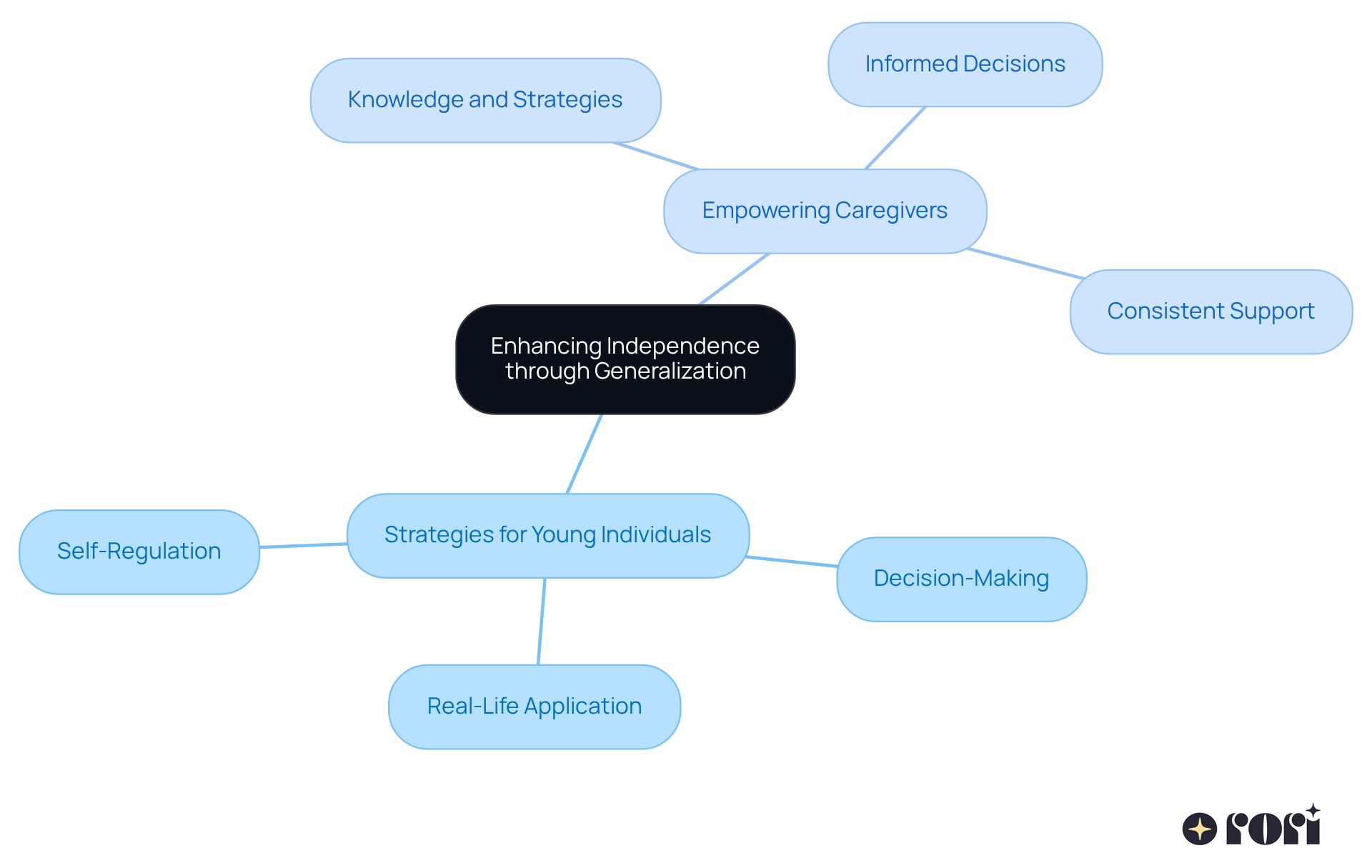
At Blossom Children's Center, we use play therapy as a fun and effective way to help kids learn through generalization procedures ABA. By engaging children in playful activities, our therapists create a natural setting where they can practice their skills in enjoyable and relatable ways. This approach not only boosts motivation but also helps kids transfer what they've learned to different play situations, making the learning process much more effective.
Play-based activities celebrate each child's uniqueness, fostering their involvement and emotional security while achieving real progress. We use techniques like storytelling, puppetry, and sensory play to create a lively learning environment. As children engage in play, they develop essential skills such as sharing, turn-taking, and problem-solving—skills that are crucial for their overall growth.
Our skilled behavior analysts implement generalization procedures ABA to design personalized plans that meet each child's unique needs, continuously assessing and adjusting based on progress reports and active caregiver participation. Incorporating play into therapy sessions transforms the learning experience, making it less intimidating and more enjoyable for kids. This ultimately leads to better outcomes in their behavioral and social abilities. Let’s explore this together and see how we can support your child's journey!
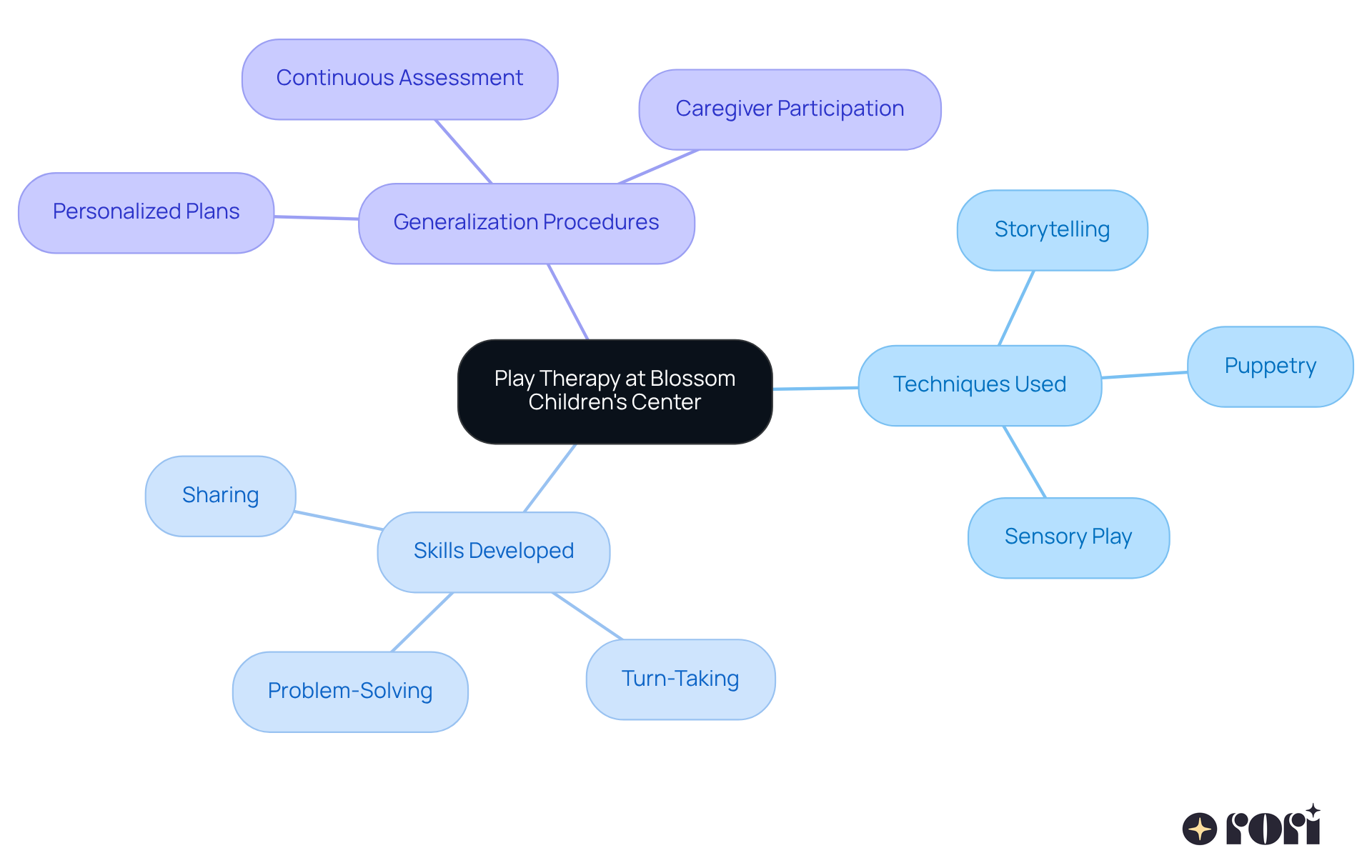
Understanding the concept of transfer in Applied Behavior Analysis (ABA) is so important for helping individuals with autism apply their skills successfully. There are two main types of broadening we should consider: response broadening and stimulus broadening.
Response transfer occurs when a young person learns to use a skill in different ways, adapting their actions to various situations. For instance, a young person might learn to ask for help verbally and later use gestures or communication devices to express the same need. This kind of flexibility is crucial for promoting independence and effective communication.
On the flip side, stimulus transfer involves applying a learned skill across different stimuli or situations. Imagine a young person who learns to greet friends in a structured therapy setting; they should be able to take that behavior and use it in other places, like at school or in the community. By encouraging both types of generalization, therapists can help children not only master techniques but also apply them in real-life scenarios.
Recent studies highlight the need for tailored strategies that support broader application of skills. Effective approaches include:
These strategies help reinforce learning and increase the likelihood that young individuals will successfully apply their skills outside of therapy sessions.
Incorporating visual supports, like schedules and pictorial cues, can also be a great help by providing clear expectations and easing anxiety. By understanding and applying the generalization procedures in ABA, therapists can create a richer learning experience that empowers individuals with autism to thrive in many areas of their lives. Let’s explore this together!
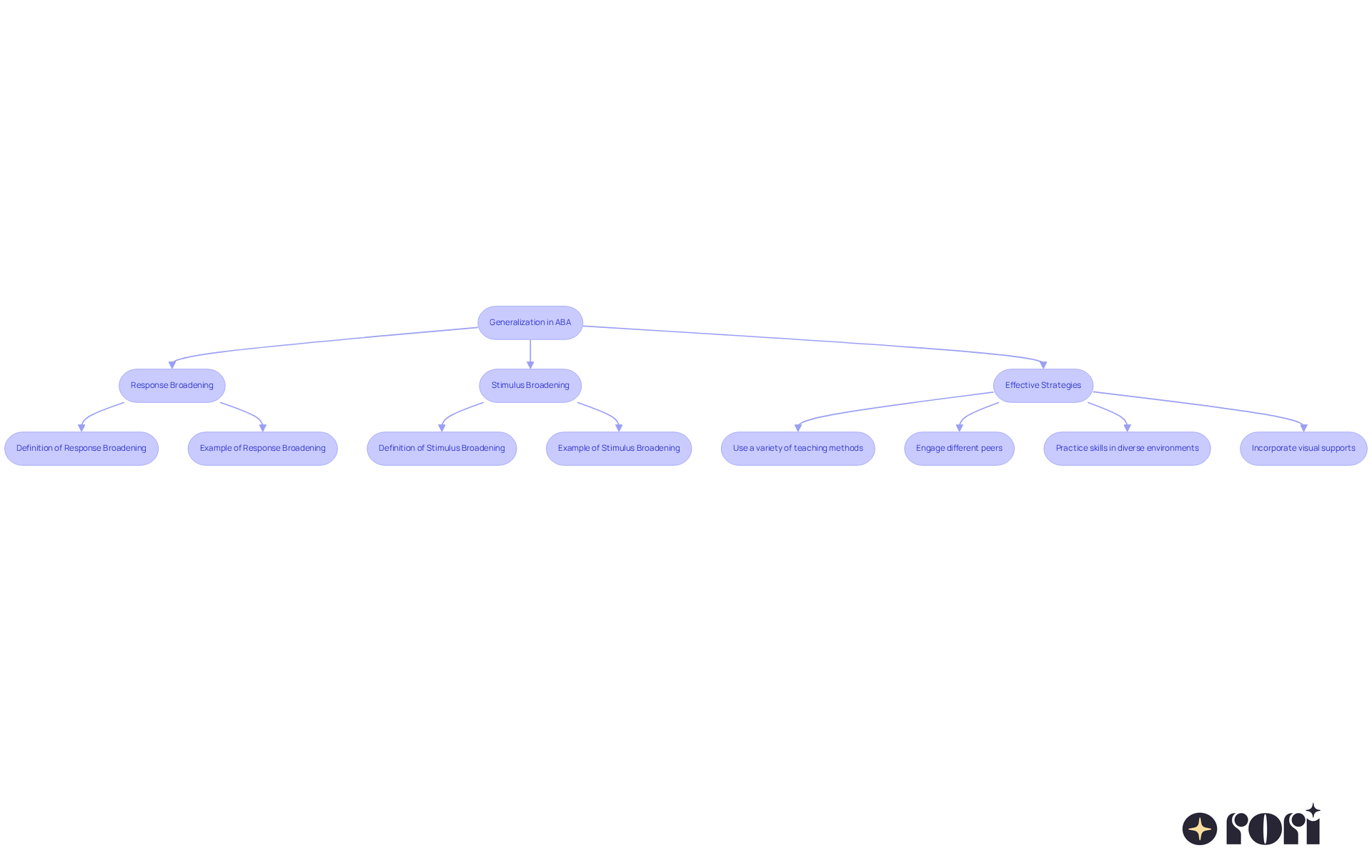
The importance of generalization procedures ABA in Applied Behavior Analysis (ABA) lies in their ability to help children with autism transfer what they've learned to real-life situations. Research shows that generalization procedures ABA, which involve teaching skills in different contexts—like varying environments, interacting with various people, and engaging in diverse activities—really boosts how well these skills are retained and applied. This approach not only supports learning but also encourages kids to use their abilities in everyday life.
When young learners are exposed to various contexts during their education, they often see better results in applying their knowledge. For example, incorporating different settings and social interactions into therapy sessions can lead to a deeper understanding and mastery of skills. This is especially crucial since many individuals with autism find it challenging to apply learned behaviors outside of structured environments, highlighting the importance of generalization procedures ABA.
Recent studies highlight that 63% to 88% of individuals undergoing ABA interventions show improvements across different outcome measures. This really emphasizes the effectiveness of instruction in various settings! By focusing on these principles, therapists can develop comprehensive treatment plans that not only promote immediate learning but also ensure that skills are retained and effectively used in daily life. This holistic approach is key to fostering independence and enhancing the overall quality of life for individuals with autism.
Moreover, skilled behavior analysts craft personalized plans that include measurable objectives and evidence-based strategies. This way, each child's unique needs are met, and progress is continuously monitored. Empowering caregivers with a better understanding of ABA principles helps them support their children more effectively, leading to improved behavioral outcomes and stronger family dynamics. Let’s explore this together!
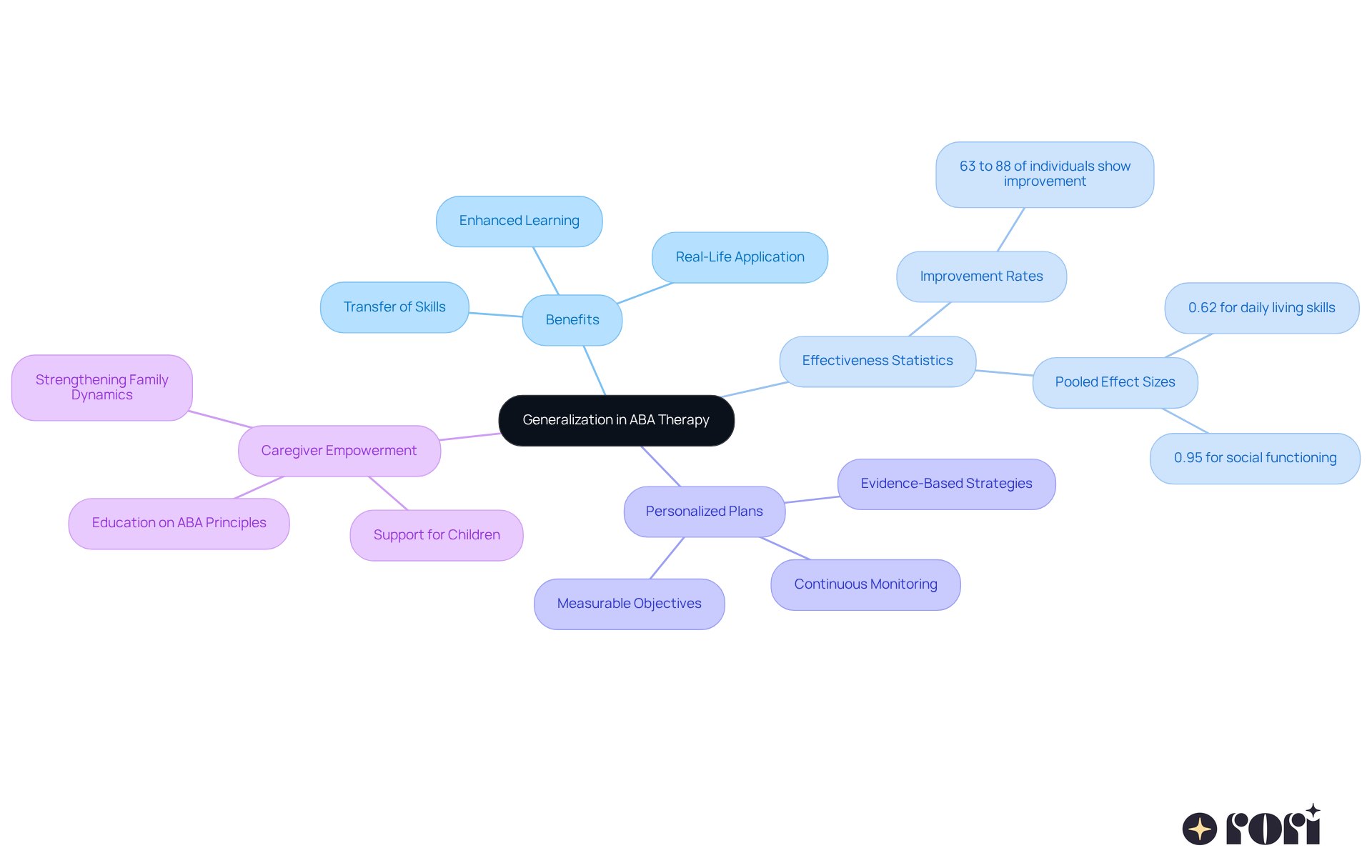
Advanced Autism highlights how important it is to have effective strategies for promoting generalization procedures aba in educational settings. Collaborative learning methods, where peers support each other's education, are key to improving ability transfer and fostering independence. Research shows that environments that encourage collaboration can lead to a 68% reduction in participation disparities among students, creating a more inclusive atmosphere.
Plus, using visual tools like charts and diagrams can really help enhance understanding and application of techniques across various subjects and activities. For instance, youngsters who use visual aids often perform better in motor skills evaluations, showcasing the positive impact of these resources on ability transfer.
At Rori Care, qualified behavior analysts implement these visual aids in a structured way to ensure consistency and effectiveness. By incorporating generalization procedures aba, educators can significantly boost academic performance, enabling individuals with Autism Spectrum Disorders to utilize their abilities in various contexts. This aligns beautifully with personalized planning and evidence-based approaches, which are essential elements of effective behavioral programs. Let’s explore this together and see how these strategies can make a difference!
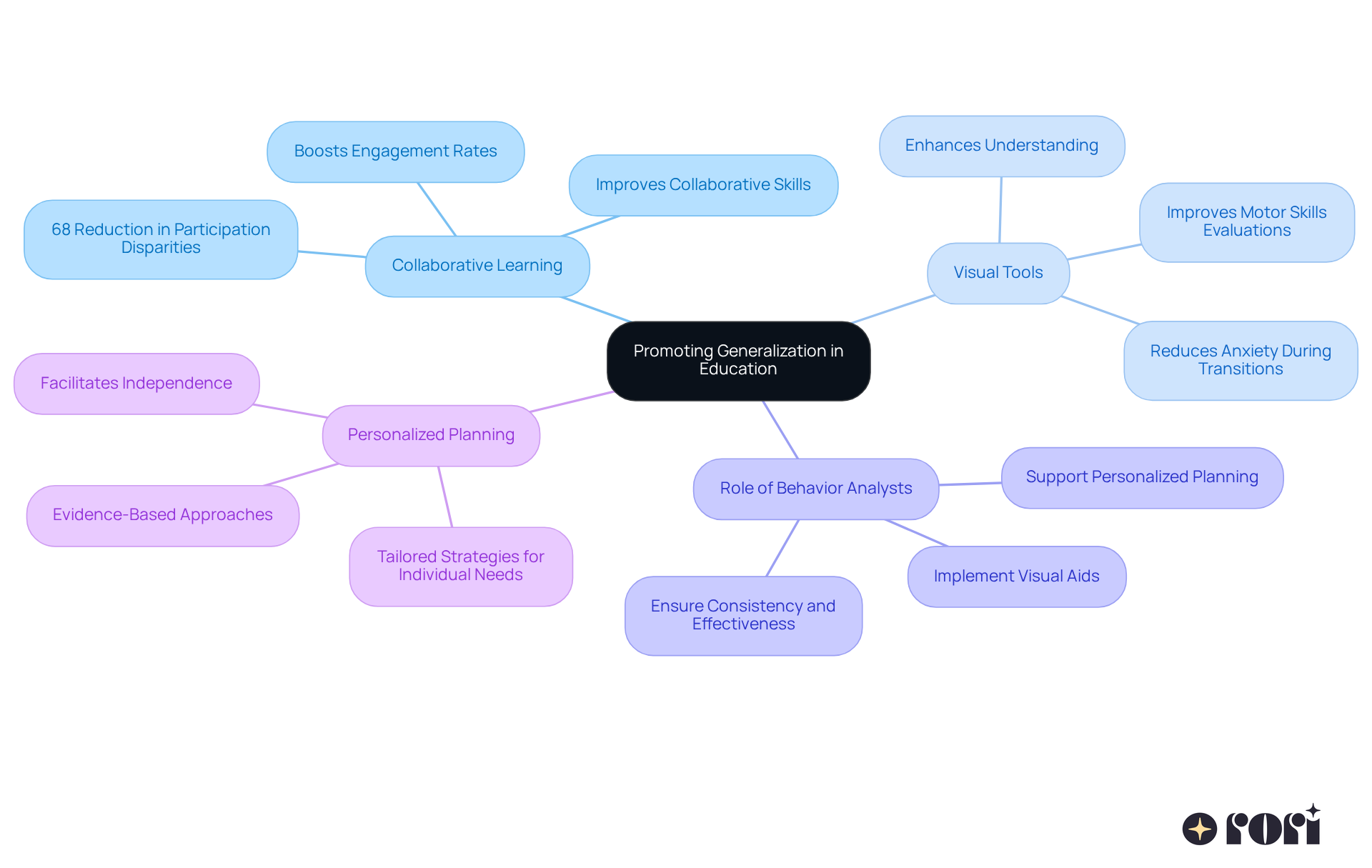
Rori Care shines a light on how stimulus control transfer plays a vital role in generalization. This process is all about shifting the management of a behavior from one stimulus to another, allowing children to apply their skills in various settings. Methods like prompt fading and using natural cues are key to encouraging this transfer. They help ensure that skills aren’t tied down to specific prompts or environments.
Naturalistic teaching techniques really boost the ability to transfer skills in home, community, and recreational activities. It’s amazing how context can influence how abilities are applied! In the long run, when skills are well generalized, they lead to greater independence, better social interactions, and an improved quality of life. Regular follow-up evaluations help track skill retention over time and across different contexts, highlighting the importance of ongoing assessment in this transfer process.
For instance, think about a young person who learns to brush their teeth after hearing an alarm. This shows how learned behaviors can be seamlessly applied in real-life situations! Plus, the involvement of caregivers, who are equipped with ABA principles and strategies, is crucial in supporting generalization. Their support can really enhance the effectiveness of these techniques.
This collaborative approach, guided by skilled behavior analysts, ensures that treatment plans are flexible and tailored to each individual’s unique needs, maximizing the potential for success. And here’s an important note: ABA intervention is the only scientifically validated approach for autism that is covered by insurance! Data gathering is a key element that empowers caregivers to effectively assist their children in reaching their behavioral goals. Let’s explore this together!
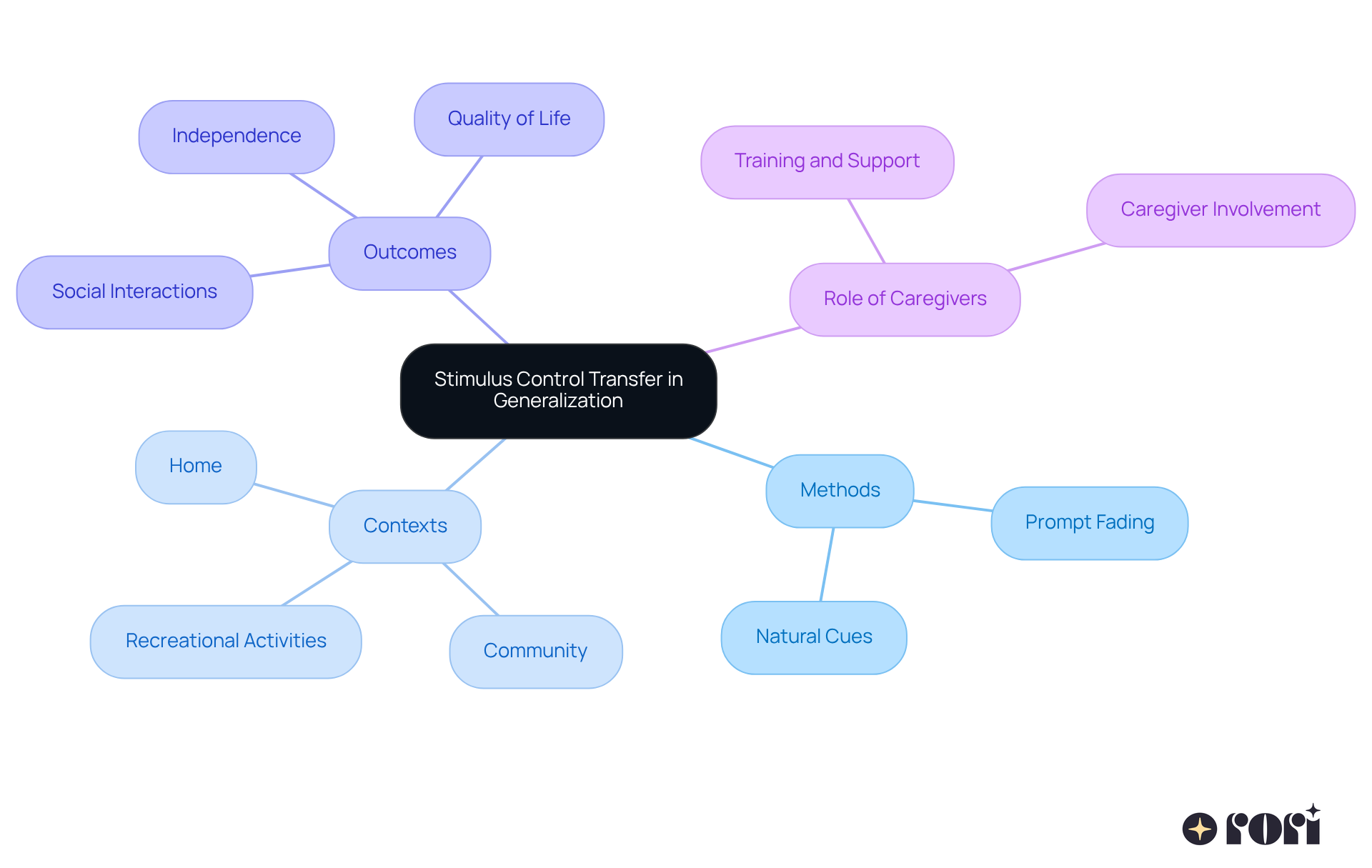
Ongoing assessment is so important for helping kids thrive in ABA therapy! Regular check-ins allow therapists to keep track of a young person's progress, spot any roadblocks to transferring skills, and adjust treatment plans as needed. This constant monitoring helps ensure that interventions stay effective and adapt to the individual's changing needs.
By using data-informed strategies, therapists can keep an eye on specific behaviors and skills, giving a clear picture of progress over time. It’s fascinating to see how systematic progress monitoring not only boosts the effectiveness of interventions but also gets families involved in their loved one's therapeutic journey.
Research shows that kids who go through regular evaluations during ABA interventions make significant strides in their abilities. This really highlights why consistent assessments are key to achieving great results! Ultimately, incorporating ongoing assessments and generalization procedures ABA into ABA practices leads to a more personalized approach, ensuring each child's unique needs are met and that they can effectively use their new skills in everyday life. Let’s explore this together!
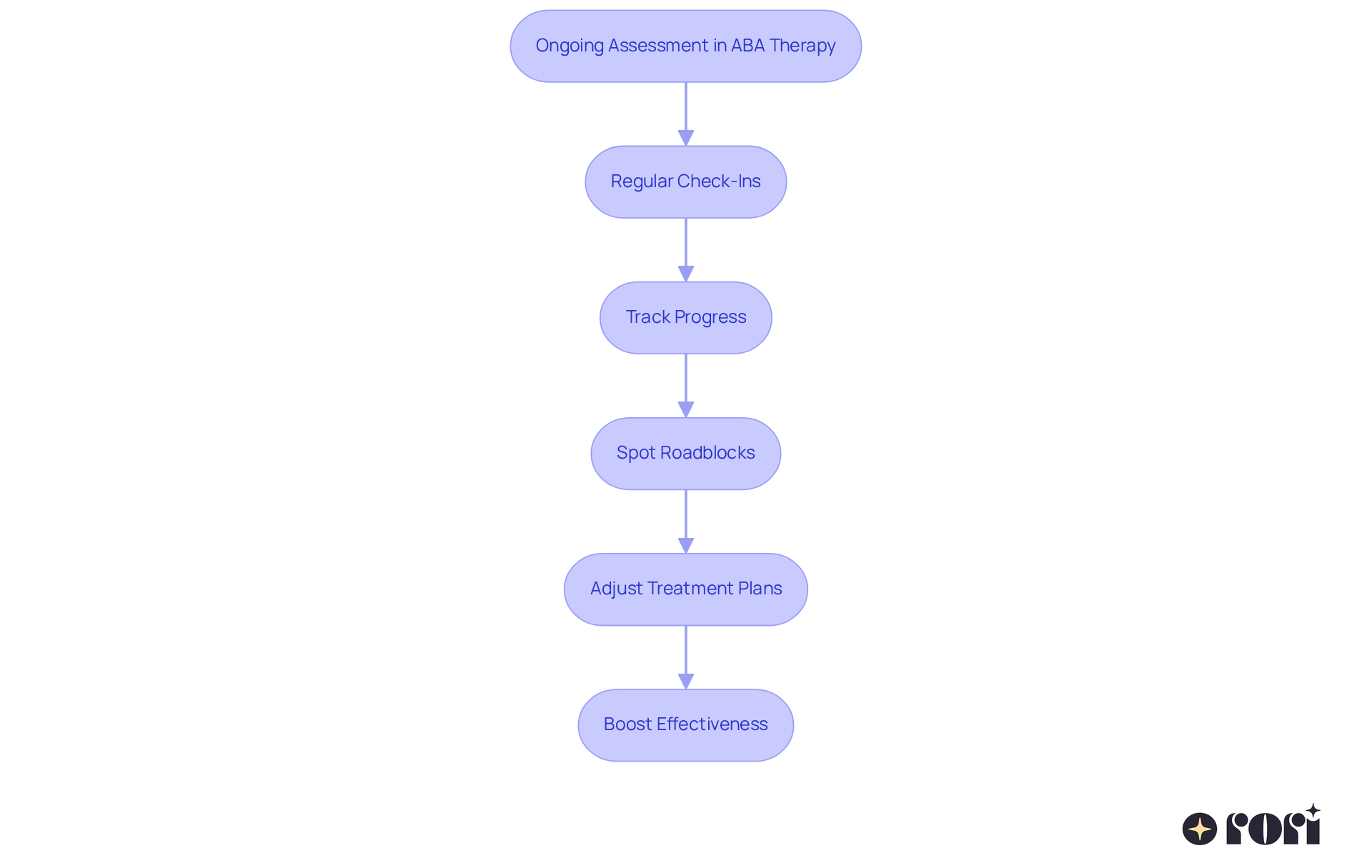
At Rori Care, we’re all about blending technology with ABA treatment to make a real difference in ability transfer. Our creative approach combines personalized treatment with cutting-edge AI, which means we can automatically create progress reports—freeing up 50% more time for youth care! Isn’t that amazing?
We also offer mobile applications and interactive software that provide fun learning experiences, helping kids strengthen their skills beyond therapy sessions. With these tools, therapists can utilize generalization procedures ABA to craft personalized learning environments that cater to each child's unique needs, setting clear and measurable goals for behavior change and skill development. This not only keeps kids motivated and engaged but also significantly boosts their ability to apply what they’ve learned in different situations.
Did you know that studies show 6 out of 10 randomized controlled trials (RCTs) found significant benefits from using mobile devices for individuals with autism? That’s why these tools are becoming essential in modern ABA therapy! Plus, the gamified elements in our applications encourage active participation. As Ruben Kesherim puts it, gamification is all about engagement, immediate feedback, and the thrill of overcoming challenges. This way, learning stays enjoyable and effective, while we also emphasize the need to balance technology with traditional methods.
Let’s explore this together! We’re here to help you every step of the way in making the best choices for your child.
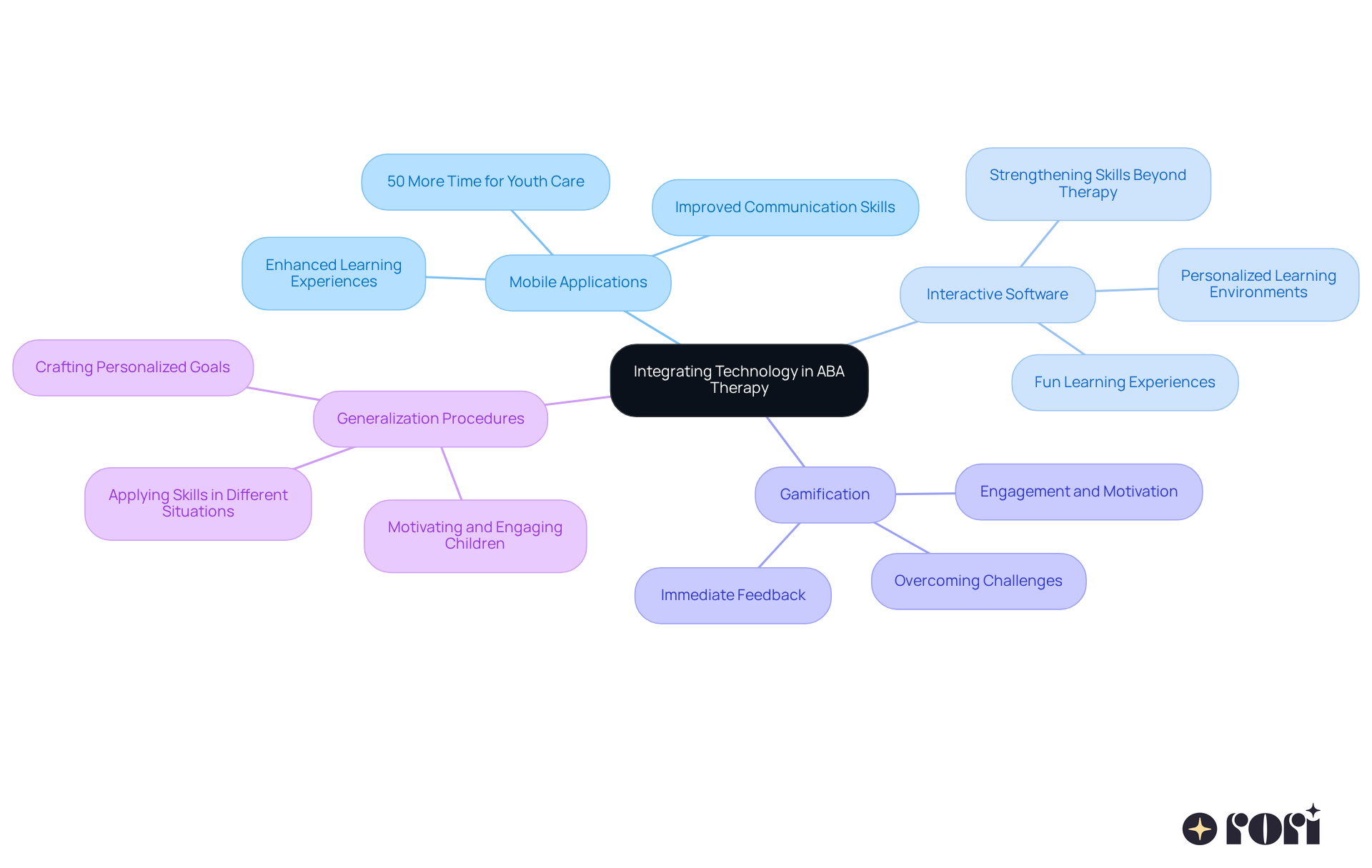
As we wrap up our exploration of essential generalization procedures in Applied Behavior Analysis (ABA), it's clear how vital it is to transfer skills learned in therapy to real-world situations. By implementing personalized strategies that cater to each child's unique needs, ABA practitioners can truly foster independence and enhance the overall quality of life for individuals with autism.
Key insights from various approaches remind us of the importance of:
Techniques like stimulus control transfer and ongoing assessment are crucial in ensuring that learned behaviors are applied across different settings, reinforcing the idea that generalization is fundamental for meaningful progress in therapy.
Ultimately, the commitment to individualized care in ABA therapy not only empowers children but also involves families in this important journey. By embracing these comprehensive strategies, caregivers can actively support their children’s development, creating a collaborative environment that promotes lasting behavioral outcomes. Remember, effective generalization procedures are about more than just teaching skills; they equip individuals with the tools they need to thrive in everyday life. Let’s explore this together!
What is the focus of Rori Care's ABA Therapy?
Rori Care's ABA Therapy focuses on personalized strategies tailored to each child's unique needs, using thorough assessments to identify the best techniques for skill transfer.
How does Rori Care ensure that therapy skills are applicable in real life?
Rori Care uses role-playing and visual aids to help children practice their skills in real-world situations, ensuring that therapy extends beyond the clinic into everyday life.
What is the role of the behavior care engine at Rori Care?
The behavior care engine at Rori Care continuously adjusts intervention and skill acquisition plans based on the latest progress reports, demonstrating a commitment to adaptive treatment plans that evolve with the child.
How does Rori Care empower families through its therapy approach?
Rori Care empowers families through caregiver education, which reinforces skills in daily contexts and enhances the effectiveness of therapy.
What techniques does Chicago ABA Therapy use to promote effective learning?
Chicago ABA Therapy uses comprehensive generalization procedures, including Natural Environment Training (NET), which teaches skills in a child's everyday surroundings to make them more relevant and applicable.
How does variety in teaching methods benefit children in ABA Therapy?
Using different examples and scenarios helps ensure that skills aren't learned in just one specific context, allowing children to become more adaptable and flexible in applying their skills across various environments.
What is the importance of regular assessments in ABA Therapy?
Regular assessments and collaboration with parents and educators enhance the effectiveness of generalization procedures, ensuring that children can successfully transfer their skills beyond therapy sessions.
How does Golden Steps ABA support independence in children?
Golden Steps ABA focuses on enhancing independence through generalization by teaching self-regulation and decision-making skills in familiar settings, helping children feel more confident and autonomous.
What role do caregivers play in the success of ABA Therapy?
Caregivers are equipped with knowledge and strategies to support their child's development, leading to better behavioral outcomes and a nurturing environment that fosters independence within the family.